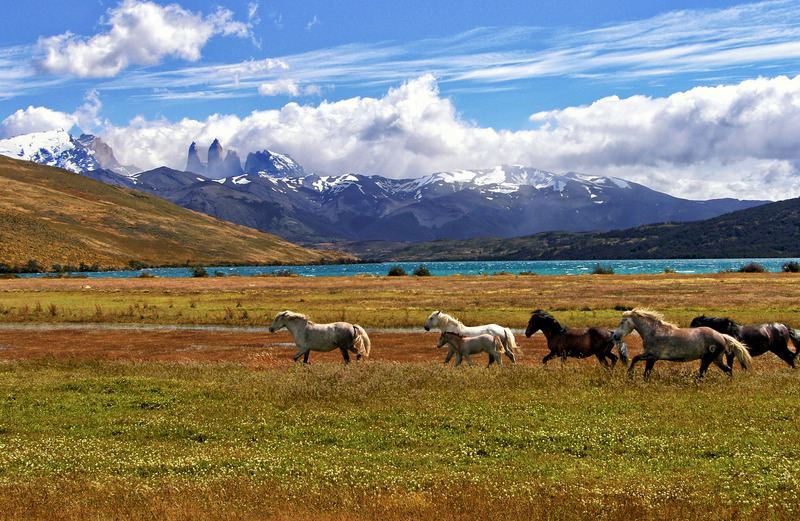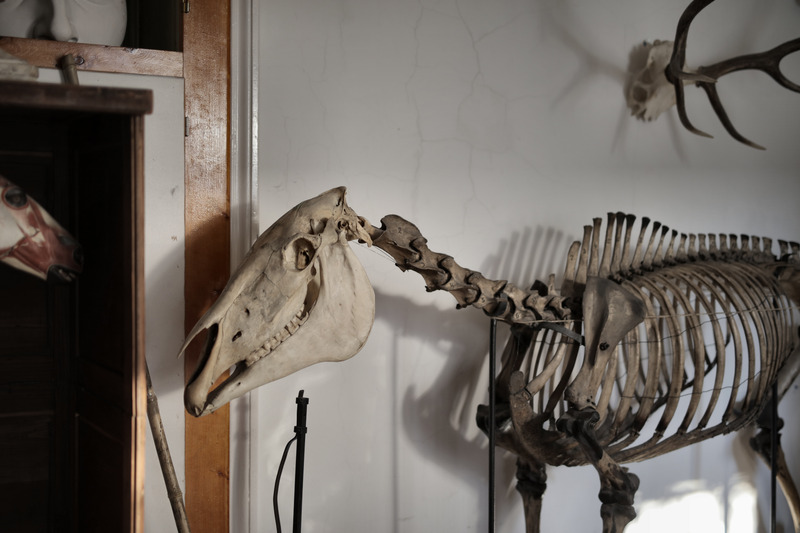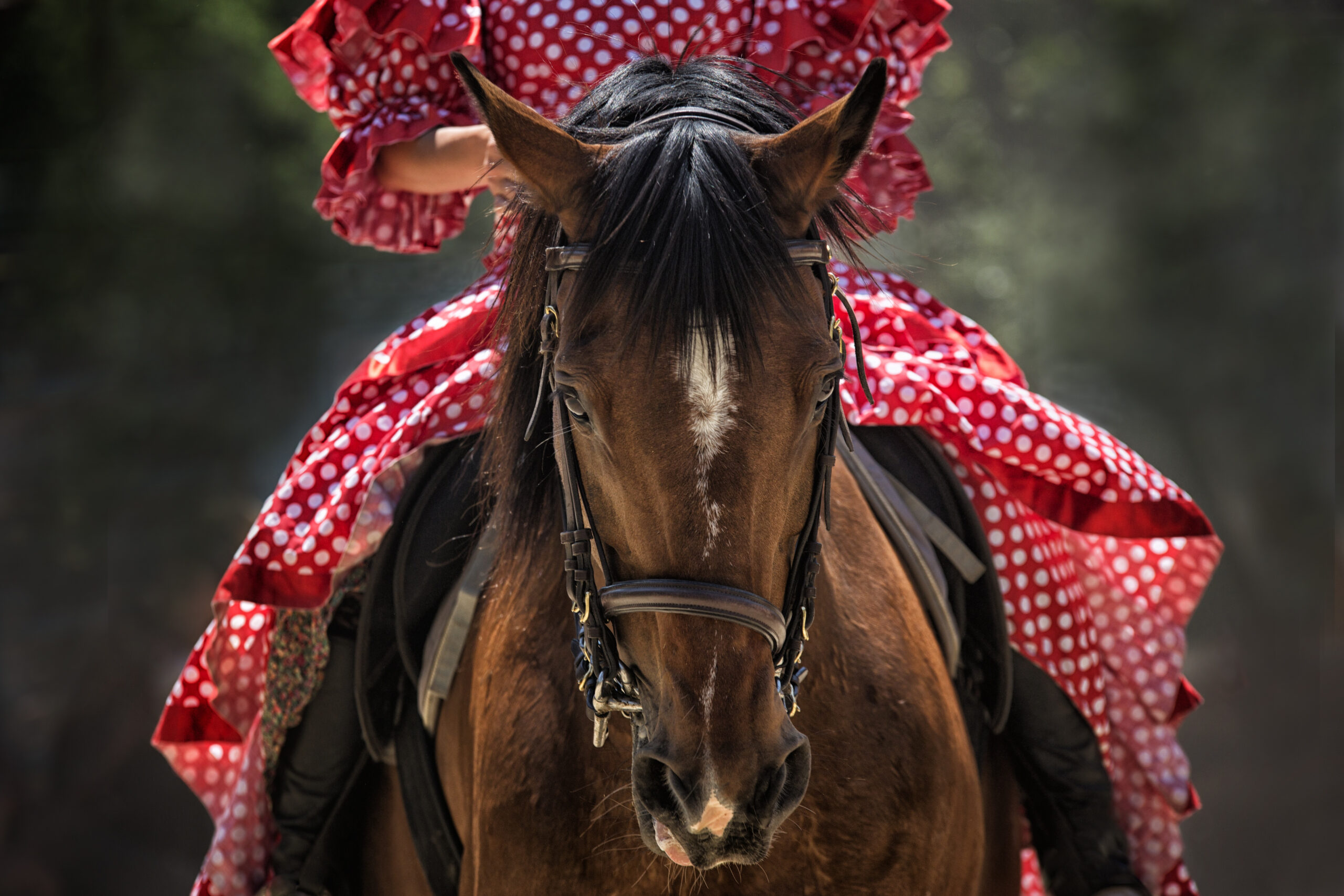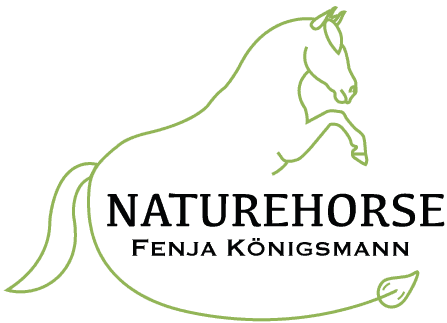For both of us (Kristina Gau Hiltbrunner and Fenja Königsmann) a lot has changed in the last couple weeks and months. We are both still surprised about everything that has happened recently. Kristina has already published two critical articles about riding on her blog and gave a talk about riding in intervals in the past. For her, our Sunday-conversation changed everything. In the following we would like to share our insights and thoughts with you.
Videos:
Riding part 1 (German): Does riding harm the horse?

Kristina
At this point I have been riding for a good 25 years. I consider myself to be one of the brave riders, I have no fear whatsoever of mounting a horse. I have ridden dressage and jumping, was a western rider and a mounted archer. I have done many trail rides and trail courses as well as various competitions and educated myself further about different riding styles. I have owned and ridden various breeds of horses as well as ridden and trained the horses of my clients. So, in summary, riding has been a big part of my life. I love the feeling, the power, the lightness.
In the last couple months I had only been riding in short intervals to protect the horses backs and to avoid excessive strain. In reality, I had all the knowledge right in front of me. But, like most horse people, I wanted to create the best possible conditions for the horse so that I got to ride it. In my article „Is riding harmful to the horse“ I mentioned information about the pressure on the tissue. This was one of the reasons for riding in intervals. But I have to admit that I did not look at the numbers closely enough.
Fenja
For 18 years now, horses have been a big and important part of my life. I have loved riding my whole life and was often the one who got handed the more ‘difficult’ cases, as I was one of the brave riders at the time, just like Kristina. I also rode dressage and show jumping, went on many trail rides and led them in larger groups as a supervisor/teacher. I loved riding – the feeling of moving together with this big, strong being was amazing. I would never have expected to turn away from riding at some point; it was far too important for me.
In 2014 I got the first horse of my own; a mare named Garzi. She opened up whole new worlds for me and completely turned my riding life upside down. In the beginning I worked with her in a very traditional way and didn’t think anything of it. My goal was to get better and become more advanced. Garzi had very different ideas, which she made increasingly obvious to me in the first 2 years. At that time, it was very frustrating for me and I looked everywhere for answers, except where I should have looked. I had physiotherapists, osteopaths, saddle fitters, chiropractors and veterinarians there to find out what was wrong with my mare so that I could finally pursue my goals.
For a short period of time it often got a little better, but nothing helped in the long run until I finally started to really listen to Garzi and not continue to look for the answers elsewhere. She was the one who, step by step, day by day, put me on a completely different path. Over time this path evolved into a much more peaceful, gentle way with horses, where honest communication at eye level is the top priority. Until mid-2019 this had still included riding from time to time, but the more I learned to understand Garzi’s language, the less I rode – it just didn’t feel right anymore. At that time, I didn’t have the numbers to back up my decision to stop riding with facts. A few weeks ago, I wasn’t sure if riding, set up somewhat differently, might become part of my life again. Kristina’s and my research made it inevitable that I would completely eliminate riding from my life.
During and after our first conversation we started to do even more research. And we discovered that all horse professionals, veterinarians and scientists were following the same approach as we had: protect the horse from unnecessary damage. We thought for a long time that if we followed the advice of well-known trainers and horse specialists, we would be more likely to help our horses and keep them healthy by riding them. But it was precisely these scientific studies that fundamentally changed our opinions about riding.
The Swiss Back Study
In this extensive study, which was published in 2019, the back health of ridden horses in Switzerland was analyzed. 248 horses participated in this study.
- 33% of the study horses show symptoms of back pain
- 32%-52% of the horses (depending on the localisation, cervical spine, BWS, LWS, ISG) have radiological and/or ultrasonographic diagnostic evidence
- 40% of the horses are clearly lame
- 90% of saddles show 1 or more problems during the saddle inspection
Or more specifically:
- Vertebral joint arthrosis: Cervical: 52% of horses with grade ≥ 2 !
- thoracic spine, lumbar spine: 38% of the horses ≥ grade 2
- Kissing spines: 45% of horses ≥ Grade 2
- Changes in the sacroiliac joint: 32% of horses ≥ grade 2
It could not be directly proven that pain is linked to rideability problems. This matches our own observations. And although there were also clinically healthy horses, these are shocking results.
When Kristina read the study last year, she thought it didn’t affect her or her horse, even though she met him at the age of nine with obvious back problems. But she was convinced that she could give him the best possible support while riding him. Over time his back became stronger and he healed mentally to a certain extent.
Fenja had also heard about several studies, but she did not feel responsible to change anything about it herself.
A summary of the study can be read in this document: PDF of the Bern University of Applied Sciences BFH
Here is another study on the spine:
„Of the 295 horses examined, 25 horses (8.5%) had no defects of the spinous processes that deviated from the norm. All 25 horses belonged to the group of young horses (group A). The remaining 270 horses (91.5 %) showed radiological deviations from the norm at the spinous processes. The most occurring changes were in the area of the caudal saddle position (Th12 to Th18).“
Study: X-ray alterations on spinal processes of 295 warmblood horses without clinical findings

The tissue and muscles of the horse’s back
The following information was THE determining factor for us that everyone should at least think about and question riding our horses. We do not criticize anyone who has not come to this point yet. It is a process and a journey that everyone has to follow at their own pace.
To begin, it must be said that the data from the different studies are not always entirely comparable. In addition, larger pressure areas are sometimes mentioned, which leave room for more or less interpretation. Our aim was to look at as many different studies as possible and then put the results into context.
Results of studies on dogs, pigs and humans showed that at pressures of 0.99-1.99 Psi (0.07-0.14 kg/cm²; 70-140 g/cm²) blood circulation is completely restricted. This complete obstruction is only prevented in the horse, by continuous movement, even at higher levels of pressure. (Source: Mary Wanless, „For the good of the horse“, p. 111)
It is also important to know that the pressure increases potentially the higher the horse’s gait is. The following numbers apply to horses without visible tissue damage. The horses were ridden with their usual saddles and by their riders. Sensors under the saddle recorded the pressure.
horse-human pair 1
- Walk: 1.14 psi (0.08 kg/cm² 80 g/cm²)
- Trot: 1.42 psi (0.10 kg/cm² ;100 g/cm²)
- Canter: 1.56 psi (0.11 kg/cm² ;110 g/cm²)
horse-human pair 2
- Walk: 1.99 psi (0.14 kg/cm² ;140 g/cm²)
- Trot: 3.41 psi (0.24 kg/cm² ;240 g/cm²)
- Canter: 3.57 psi (0.25 kg/cm² ;251 g/cm²)
The pressure in horses with noticeable pain and pressure damage was significantly higher than the figures mentioned here. There is no difference between horse breeds with regard to pressure sensitivity.
But what do all these numbers mean?
The highest pressure found in the capillary bed is approximately 0.75 psi (0.05 kg/cm²; 50 g/cm²).
(Source: Journal of Veterinary Science, Volume 14, No. 11 – Dr. Joyce Harman)
The average size of saddle panels (the part actually touching the horse) is approximately 140 square inches (900 cm²). In order to not exceed the pressure in the capillaries and not restrict blood circulation, the saddle and rider must not weigh more than 100 pounds (45 kg). This makes other studies on rider weight practically irrelevant.
Back to the numbers from the book by Mary Wanless:
At a pressure of 0.99 psi (0.07 kg/cm²; 70 g/cm²), circulation of fluids is completely stopped with a constant weight of 138 pounds (63 kg) distributed over the entire saddle panel surface. At 1.99 psi (0.14 kg/cm²; 140 g/cm²), the fluid circulation stops with a load of 277 pounds (126 kg) by saddle and rider. So, to make it very clear: These numbers describe the pressure at which the circulation of fluids comes to a complete standstill! Therefore, the weight must remain well below this threshold in every gait and must not exceed the normal pressure in order not damage the tissue.
Please have a look at the numbers in psi and kg/cm2 for the gaits one more time.
If we have a maximum load of 99.2 pounds (45 kg), subtracting the weight of the saddle with approx. 22 pounds (10 kg), then every adult rider should be aware that his actions are harmful to the horse and cause pain. It should also be noted that not only must the saddle fit perfectly for this to work, which very few saddles do, despite adjustments, but the rider must also sit in perfect balance. These parameters are almost impossible to meet.
From human research it is known:
„Constant pressure of > 32 mmHg (= 0.64 psi; 0.043 kg/cm² or 43.5 g/cm²) for more than two hours has been proven to cause significant tissue damage to the skin and underlying muscles (Holloway 1975). The pressure levels determined so far below the saddle amount to a multiple of this.“ (Source: https://www.pferdeheilkunde.de/10.21836/PEM20050301)
An even more dramatic result than already reported above. It is not possible to generalize as to when the horse will suffer visible damage from this.
What will definitely occur is pain!
It is not possible to avoid pain, because the pressure exerted by the rider is significantly higher than the normal pressure in the capillary bed. Since the pressure increases even further at higher gaits, as described above, the blood circulation is at least severely restricted despite the movement.

Can you see the pain and helplessness?
A voice for the voiceless
Some horses express their discomfort from riding very clearly. The horse in the picture above already shows many signs of discomfort and pain (eye shape rather triangular and wrinkles above it, line of vision is downcast and inward, position of ears to the side and downwards). Other horses do this more or less, depending on the situation. Photos usually reveal their physical and emotional state most effectively. It can be said that a photo is just a moment in time, however if a person is sensitized to the signs of pain in a horse, the signs of pain are clearly revealed. However, with some horses, or rather depending on the situation, the signs of pain can be hard to see. Of significance is that as a rider, one has the feeling that the horse actually might enjoy being ridden. We asked ourselves what the reason for this could be. Here are a few possible explanations:
- The horse is conditioned to be ridden. Many horses are already ridden at a young age, when they are easier to control and subdue.
- By releasing morphine-like substances, the sensation of pain is suppressed. Other messenger substances such as adrenalin and noradrenalin can cause a kind of intoxication.
- Horses usually know very well that humans will ask again and again for what they want. Although a no is accepted by some horse trainers in the moment, it is not an option in the long run.
- Most horses are naturally very willing and highly developed to cooperate, especially when they have established a bond with their human. Others, which are strongly dominated, and try to avoid conflicts at any cost.
- Every domesticated horse is dependent on humans and therefore has limited choices.
- As there is often no correlation between back pain and a horse’s apparent willingness to be ridden, the rider continues as usual and the horse enters a state of learned helplessness.
Other explanations are possible. The point of conditioning of man and horse is often not yet examined with sufficient critical awareness. The human being perceives many things as normal, which in reality are not. It is therefore important for us to raise our voices for the horses.
Our conclusions
Kristina
I didn’t want to face it; I didn’t want to believe it. I wanted to hold on to the tradition of riding and not admit to myself that I was inflicting pain on the horses. But that is exactly what I have been doing for years. And they rarely, if ever, showed it. And your horse will most likely not show it to you in a direct enough manner either. Because we have conditioned them to more painful consequences when they do fight back and they also try to please and cooperate. So even a horse that is trained and ridden in the gentlest of ways will inevitably suffer pain. This is still incomprehensible to me. But all these studies paint a clear picture for me.
No, it is not easy for me to give up riding. But it does trigger positive feelings in me. How can I say that I love horses and knowingly inflict pain on them at the same time? They have not been created to make me feel good. They do not owe me anything!
Therefore, my decision is final that I will not ride horses anymore. It is not an option anymore based on what I know now. No horse has to be ridden to be healthy and happy! On the contrary! I have already found other ways to be with horses and to dance with them. Wonderfully fulfilling feelings included. And even if I will continue to be critical about some of these things in the future in regard to real horse-friendliness, I am glad to have finally opened my eyes and woken up.
Fenja
By the time Kristina and I decided to look into this topic, I had already decided that riding was no longer something that I wanted to do for various reasons. I had seen some studies before but had never taken a closer look at them. This has now changed and although my decision had already been made, I was increasingly shocked when we looked at all the numbers. I asked myself: how can you even consider riding when this knowledge is already circulating the world? And despite all this, it was still hard for me to give up riding completely.
I was very lucky that my mare didn’t just let me do everything I wanted to do with her. But I regularly see far too many horses around me that still have to endure their suffering silently. Most horses do everything to avoid conflicts – they have learned that humans will ask until they submit to their will. And the few horses that do not do this are broken by harder methods, with harsher, crueler instruments or are sent to their final destination by desperate people.
My decision to stop riding has been further strengthened by the conversations with Kristina and our research on the subject. I could no longer climb on the back of a horse with a clear conscience, knowing that I would be harming this kind-hearted being. What entitles us to use horses in this way? In any way for that matter? As Kristina mentioned above, no horse needs to be ridden to have a healthy and happy life! There are many other fulfilling ways to spend our time with horses. If we let ourselves understand them as they are, we can learn an incredible amount from our horses. All we have to do is become quiet, let them speak, open our hearts and all our other senses to find out what they are willing to teach us.
„When you have come to know the truth, the only
way left is one of change and inner growth.“
Kristina Gau Hiltbrunner

Danke :'(